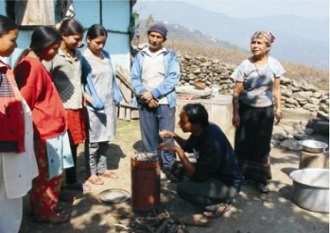3p spoke with Andrée Sosler, Executive Director of the Darfur Stoves Project, to learn more about the initiative and what’s possible when a fledgling non-profit is led by an MBA with a commitment to the public interest and backed by a powerhouse research institution.
Triple Pundit: What is the relationship between the Darfur Stoves Project and the University of California, Berkeley?
Andrée Sosler: The Darfur Stoves Project is an entity of Technology Innovation for Sustainable Societies (TISS), an emergent non-profit currently registering for their 501-(c)3 status. TISS is the link between the lab and NGOs in the field. Our work is demand driven. We focus on relationship building, needs assessment, user feedback, support the creation of supply chains and social marketing. In essence, everything that is not the actual technology. Lawrence Berkeley has a budget of $774 million this year. The staff has tremendous capacity, and a strong will to participate in our work, to volunteer. TISS intends to fill the gap and serve as a connector between the potential of a large research institutions and NGOS.
3p: The Darfur Stoves Project is just one enterprise led by TISS, independent of USAID but created in collaboration with the Lawrence Berkeley lab?
Sosler: OFDA/USAID introduced the Lawrence Berkeley team to CHF International, the initial partner for the project. The team advised CHF and trained their staff to test and adapt the stoves, etc. However, after sending a team to Darfur, and benefiting from analysis from business schools, we found that we could lower production costs, increase capacity and improve quality consistency by shifting our manufacturing to India. Fundamentally, it was a question of heightened comparative advantage. While some firms mass-produce stoves to turn a profit and others focus on generating local income and keep their production local, TISS works with the Lawrence Berkeley lab and our current field partner, Oxfam America to incorporate the strongest aspects of both models.
3p: There are obvious advantages to having the support of a major research institution, but what are some of the challenges that stem from working with UCB?
Sosler: Communication is a challenge, particularly as it relates to the transition from the research behind a project to its implementation. The Darfur Stoves project benefits tremendously from UCB; it wouldn’t exist without it. Still, one question we are juggling is how to benefit from that support while becoming nimble and independent.
Read More – Triple Pundit, May 21, 2010



